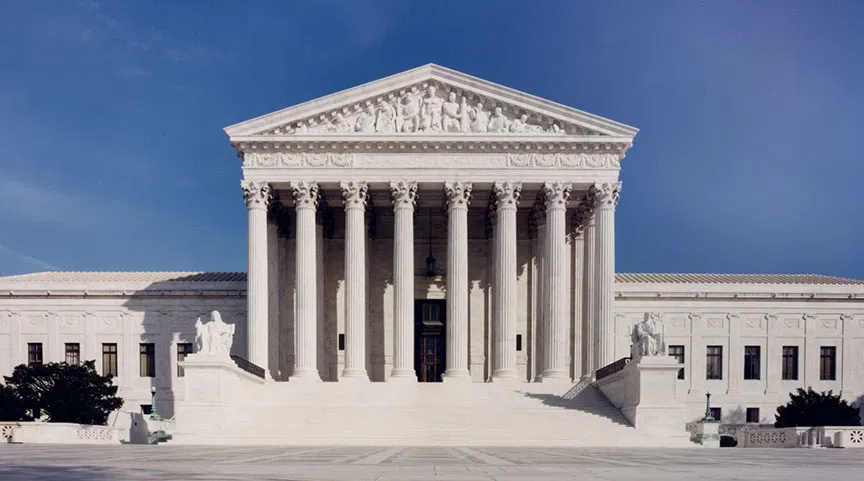Background of the Supreme Court Ruling
The recent decision from the Supreme Court regarding California’s capacity to set its own environmental regulations, through Environmental Protection Agency waivers, might seem like a quagmire to some. Yet, this ruling carries implications that could ripple through the trucking industry in the future.
The ruling primarily tackled whether an external company could challenge government regulatory actions, ultimately opening new avenues for potential litigation that could support the trucking sector.
In a pivotal ruling, the Court overturned a prior decision from the D.C. Circuit Court, which dismissed a challenge to California’s waiver that permits the state to enforce its Clean Cars regulations. These regulations were among the first initiatives by the California Air Resources Board aimed at creating a cleaner automotive environment, paving the way for initiatives like Clean Cars 2 and other significant environmental rules.
Understanding the Clean Cars Regulations
The original Clean Cars initiative, which applied to the 2025 model year, necessitated that a percentage of Zero Emission Vehicles (ZEVs) be included in the fleets sold within California. While these mandates were less stringent than those present in the now-complex Clean Cars 2, they nonetheless required reductions in greenhouse gas emissions that would transcend the model year limit.
California has a storied history surrounding its environmental regulatory measures, with approvals bouncing between administrations. Initially approved during the Obama administration in 2013, the waivers faced repeal during President Trump’s tenure only to be reinstated under President Biden in 2022.
Historical Context of Regulatory Waivers
The waiver history is anything but linear; it oscillated between administrations and opinions. Diamond Alternative Energy, a subsidiary of Valero Energy, contested the recent resurrection of the Clean Cars regulations, alongside other plaintiffs from the petroleum sector. Yet, California successfully argued that Diamond lacked the standing to sue in this matter.
According to court documents, Diamond’s argument claimed that California’s regulations were more about global climate change than local air quality, which they contended was illegal under the Clean Air Act.
The Case’s Implications for Trucking
Though the high-profile litigation façade primarily centers around personal vehicles, legal experts, like Prasad Sharma from the Scopelitis law firm, predict that the implications stretch into the trucking territory. Sharma believes that the Supreme Court’s ruling might empower trucking associations to challenge regulations affecting their industry directly.
The court’s decision could denounce the notion that trucking companies are completely detached from regulations that arise from environmental initiatives tied to passenger vehicles. If the ruling leads to increased scrutiny over rules affecting all levels of transport, trucking firms may find themselves with newfound legal avenues to contest them.
Continued Legal Challenges and Future Effects
Even with recent Congressional measures appearing to silence California’s legislative attempts, Governor Gavin Newsom’s administration is poised to mount legal challenges against these actions. If future queries regarding the viability of these waivers arise, the recent judicial interpretation could prove beneficial for the trucking sector.
The ruling reflects a recognition that entities like trucking companies, while not directly regulated by California’s Clean Cars regulations, could still be adversely affected by the outcomes of these environmental initiatives. Such recognition expands the scope of participants who might challenge subsequent regulations on similar grounds.
The Bigger Picture for Logistics
As we consider the broader logistics landscape, it’s crucial to connect the dots between environmental regulations and the movement of freight. The Supreme Court’s ruling symbolizes a shift, potentially reshaping how environmental considerations intersect with logistics practices.
For organizations focused on logistics—from freight management to distribution—navigating these regulatory nuances is not just about compliance; it’s about strategic foresight and embracing cleaner alternatives that may soon become the standard.
Підсумок
In essence, the Supreme Court’s recent decision about California’s environmental regulations is not merely a footnote but a developing chapter in the ongoing narrative about how regulatory environments shape business landscapes, particularly in the trucking industry. This evolving situation highlights the importance of sustainability and reliability in logistics as companies prepare for a combined scrutiny of environmental responsibility alongside operational demands.
While robust discussions surrounding these regulations will continue, this development signifies the potential for increased legal challenges regarding environmental mandates impacting logistics companies. Individuals tasked with delivering goods or transporting large items should stay ahead of trends that not only address compliance but exhibit responsible operational practices. For your next cargo transportation phase, consider the convenience and reliability offered by GetTransport.com, your one-stop solution for affordable global cargo transport. Whether it’s a simple house move or freight logistics, GetTransport.com is there to handle it all—transportation made easy. Book your cargo with GetTransport.com сьогодні!

 Рішення Верховного суду щодо екологічної відмови Каліфорнії може принести користь вантажному сектору">
Рішення Верховного суду щодо екологічної відмови Каліфорнії може принести користь вантажному сектору">